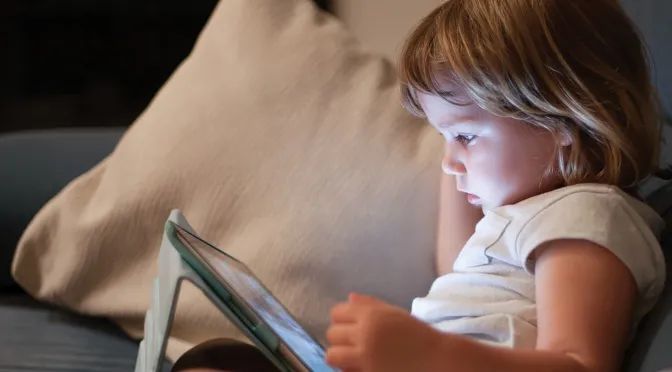
The effects of screen time on Autism Spectrum Disorder
The effects of screen time on a child’s developing brain continue to concern parents, educators, pediatricians, and mental health professionals. As Simply Family Magazine reported in January, the average child spends more than 7 hours a day looking at a screen. The results? Recent brain imaging studies were shocking. Such extreme exposure can rewire a growing mind, causing lasting neurological damage, while also wreaking havoc on sleep patterns, jeopardizing mental health and contributing to social isolation, depression, and anxiety.While the focus has been on typically developing, or TD kids, kids with differently configured brains, such as those with Autism Spectrum Disorder, or ASD, face a unique set of risks and challenges.
ASD is a widespread neurological condition, marked by impaired social communication skills, repetitive behaviors, and restrictive interests. It varies in intensity, so some are nonverbal while others present as “little professors” and some have pronounced repetitive behaviors (e.g., “flapping” or lining up toys) and others do not. Kids with ASD also may have co-occurring diagnoses such as ADHD or anxiety.
Its cause remains a mystery, but ASD diagnoses have steadily increased over the past few decades; the current estimate from the CDC is that one in 59 children have autism. Since it is so pervasive, it's important for researchers, and also families, to understand how screens impact those with ASD.
Research has found that parents of children with autism use more screen-based activities than parents of TD kids, possibly to help manage difficult behaviors such as outbursts. It has also been suggested that parents might offer their children screens to give themselves some relief from the increased stress and depression experienced and documented by caregivers.
Jolane Flanigan, a provisional counselor at Northwest Counseling Center, says additional screen-related issues might face ASD children, many of which haven't been well studied. Two of the major issues are interference with sleep and dysregulation/hyperarousal and decreased social connection time. The second issue is possibly more worrisome because social isolation for children already facing hurdles in that arena could have lasting consequences.
The first issue of sleep, dysregulation and hyperarousal, plays out in a variety of ways — kids with autism struggle more than their TD peers to fall and stay asleep. Repetitive behaviors associated with ASD can delay falling sleep, as can co-occurring ADHD and anxiety. Some research suggests that kids with ASD also tend to have atypical levels of melatonin, whether too low at night or too high during the day, which interferes with high-quality sleep. Outdoor activities that help regulate sleep rhythm can be more difficult with ASD, since they often involve group activities, need additional adult supervision and require transitions. Adding to the cycle, lack of sleep increases the occurrence of challenging autism behaviors, so exhausted parents may turn to screens to offer their child a short-term quieting effect.
Because of their brains’ neurological differences, kids with autism are more prone to being hyperaroused and dysregulated than their TD peers. They tend to have sensitivities to sounds and textures that TD kids don’t notice. Brains that are wired to get “stuck thoughts” and to experience “big emotions” that are processed less efficiently, meaning that video games and other stimulating screen-based activities are more likely to dysregulate kids with autism. That dysregulation can lead to increased tantrums, oppositional behavior, and outbursts of intense emotion.
The second issue is that children with autism also use screen-based activities differently than their TD peers. ASD kids tend to view more TV and videos and play more video games, but research shows that ASD kids engage in less social media use. For a population that struggles with social interaction, it’s important to provide more, not fewer, opportunities for social interaction.
Finally, while it is important to monitor and limit screen use, it should also be noted that some screen-based activities may help kids with autism to develop academic and social skills. The goal is to tune in to our children and keep the big picture in mind as we teach them healthy ways to use screen-based technologies.
by Jolane Flanigan, Northwest Counseling Center and Stephanie Hobby
Originally printed in the pages of Simply Family Magazine’s February 2019 issue.
Check out the digital edition, here!
about the co-author...Stephanie Hobby is married to an awesome Billings guy. They love skiing, hiking, traveling, and other adventures with their two fun kids and crazy dog.
